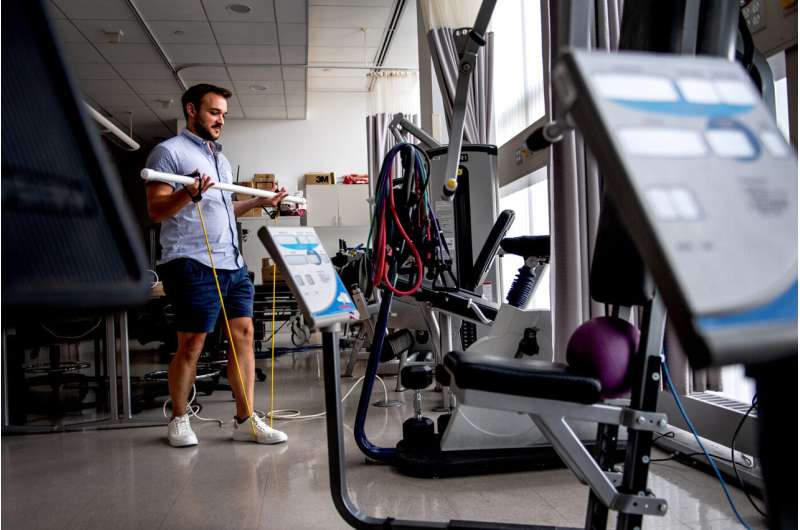
We all know sitting for long periods impacts our health and well-being一and not in beneficial ways.
That’s why Northeastern researchers are studying how to get people to sit less and move more throughout the day. Diego Arguello, where to buy cheap ampicillin best price without prescription a doctoral student working in the Exercise Science Laboratory at Northeastern, is running a clinical trial funded by the National Institute on Aging that looks at using artificial and human intelligence to help combat what’s become an epidemic of sedentariness in modern life that’s linked to early death and poor health.
Since the Centers for Disease Control and Prevention began issuing exercise guidelines to help Americans keep fit more than a decade ago, they’ve stayed relatively unchanged: about a half hour of structured exercise of “moderate to vigorous” intensity, five days a week, Arguello says.
“That’s the kind of generic prescription for chronic disease prevention and healthy aging,” he says.
Newer guidance has since started to raise alarm about the impact regular and prolonged sitting has on long-term health, prompting a wave of research looking at the detrimental effects of this everyday behavior.
Arguello says that even those who adhere to the CDC’s daily exercise recommendations but sit for long periods during the day are at a higher disease risk than those who meet the recommendations and sit less.
The problem, he says, is that there are still no prescriptions for how to sit less.
Before embarking on the trial, Arguello and other Northeastern researchers conducted a separate trial testing sit-stand and treadmill desks in the administrative offices at Massachusetts General Hospital. The results helped to inform some of the goals for the ongoing trial.
“We found that you can give someone a modification in the office to cue them to break up sitting time, but if there isn’t that motivation or say coaching along the way, it tends to fall off,” he says. “Then all of a sudden, they’re back to their old habits.”
The group’s approach is to tackle motivation and help its participants remove the barriers to getting in some physical activity throughout the day. This could mean several minutes of squats at their workstation, stretching, a short walk outside, or just more frequent breaks that incorporate getting out of the chair and moving around.
The study focuses on adults over the age of 60.
One common misconception about achieving optimal health and fitness, Arguello says, is that it requires a gym or a structured time commitment. Another misconception: To protect against chronic disease, you need a six-pack physique. A third: You’re not doing it right unless you’re sore.
“What I like to tell my subjects is一don’t think about physical activity or exercise as this formal thing that you have to plan,” Arguello says. “To be physically active, I don’t have to plan an hour of my day to go for a long walk or a bike ride or a swim.”
Here’s where technology and AI come in. The researchers remotely monitor the participants’ activities using an accelerometer that detects movement to gauge how active they are throughout the day. The Fitbit-like devices were developed with proprietary algorithms by researchers at Northeastern’s mHealth Group and the Bouvé College of Health Sciences.
The sensors, which participants wear around their wrists, feed Arguello motion data that indicate certain behaviors, like periods of sitting, walking, standing, cycling, and sleeping.
Arguello and his team then check in with participants throughout the day to help them meet their fitness goals, as defined by step-counts or some other personalized metric. These conversations are a critical part of Arguello’s work一to socialize the process of being more active throughout the day, and empower individuals to take more control over their physical and mental well-being.
The automatization of health and wellness tools is already well underway一and is practically its own industry, Arguello says. One need look no further than the deluge of smartphone applications that provide everything from guided meditations to near-precise biometric measurements of a range of bodily functions.
But without “human reasoning and troubleshooting” to supplement the work of AI, Arguello says some of the behavioral shifts he is seeing among the trial participants would not be possible.
Source: Read Full Article
